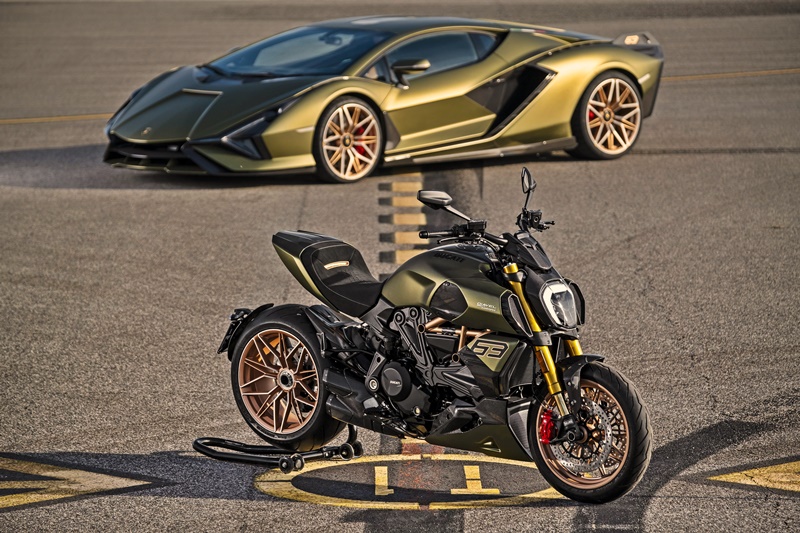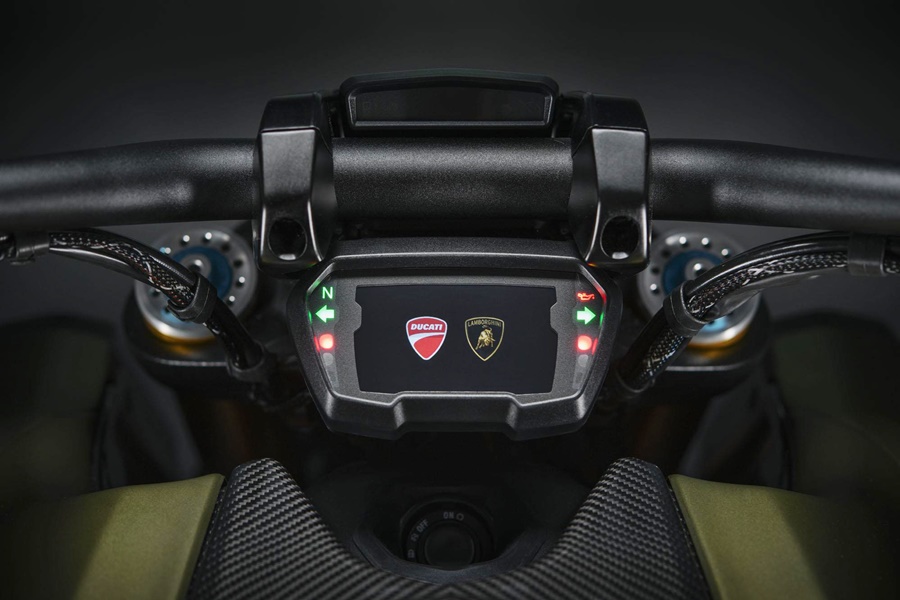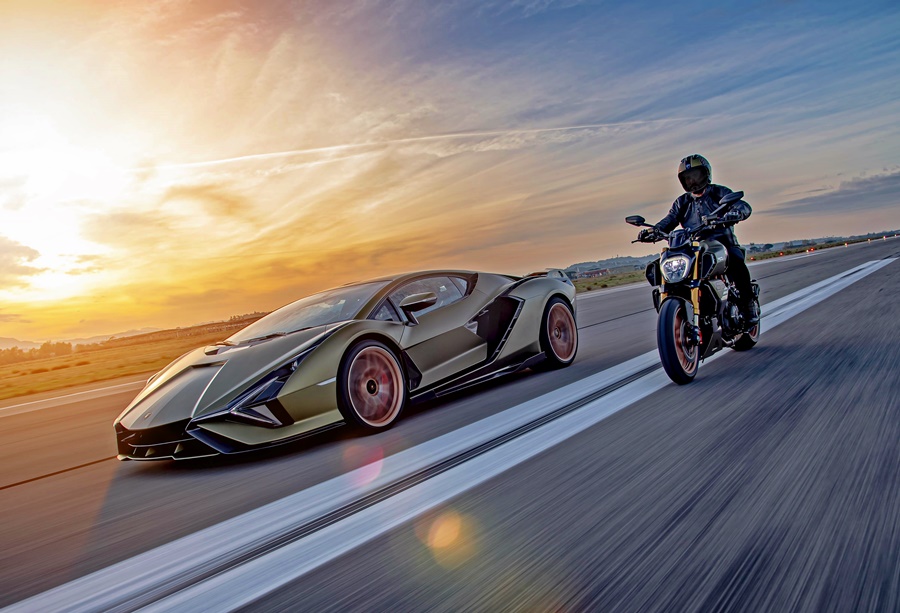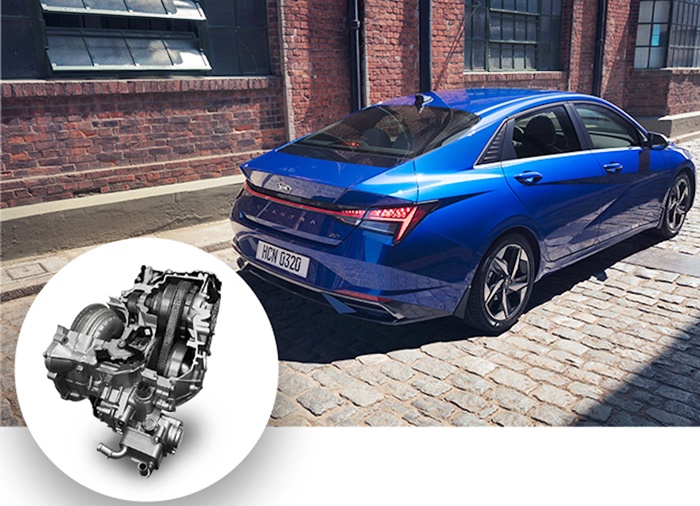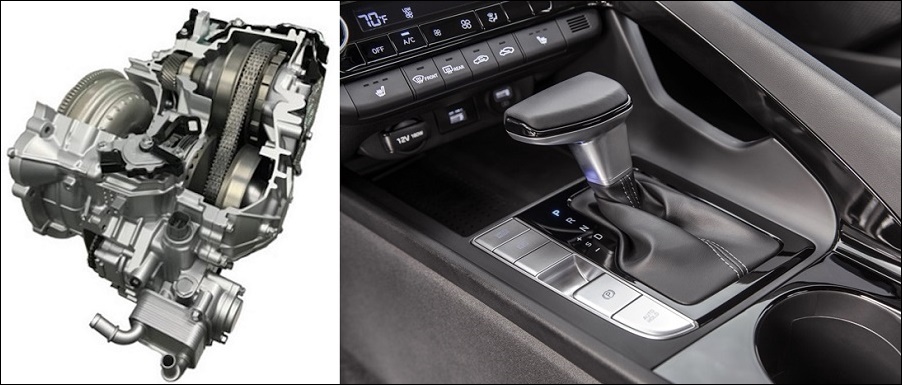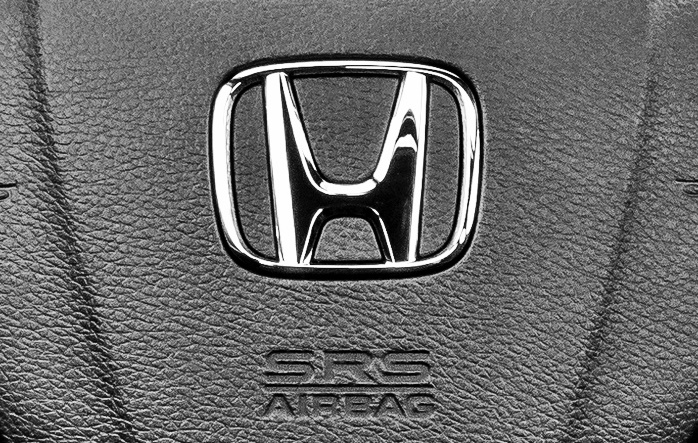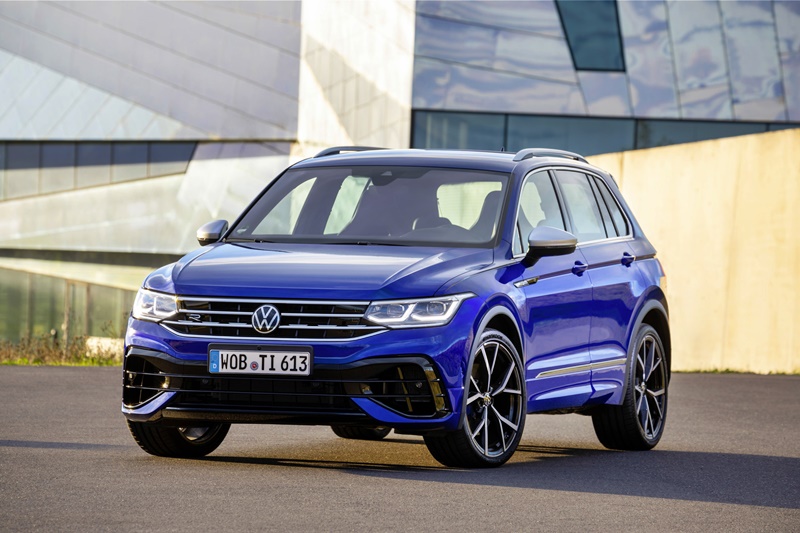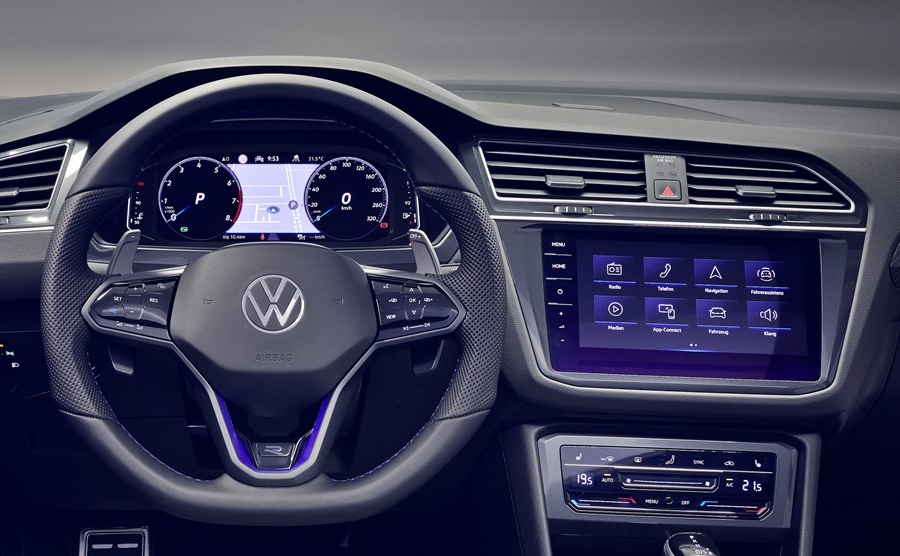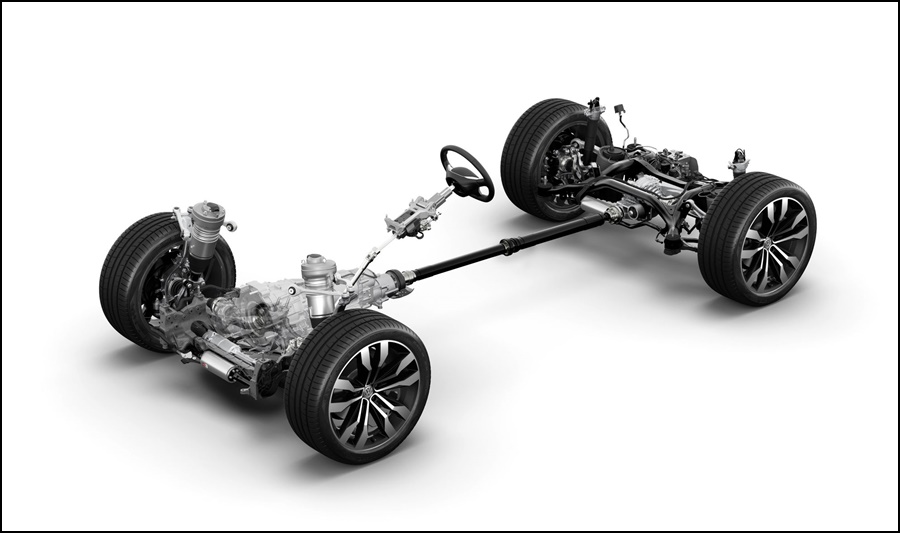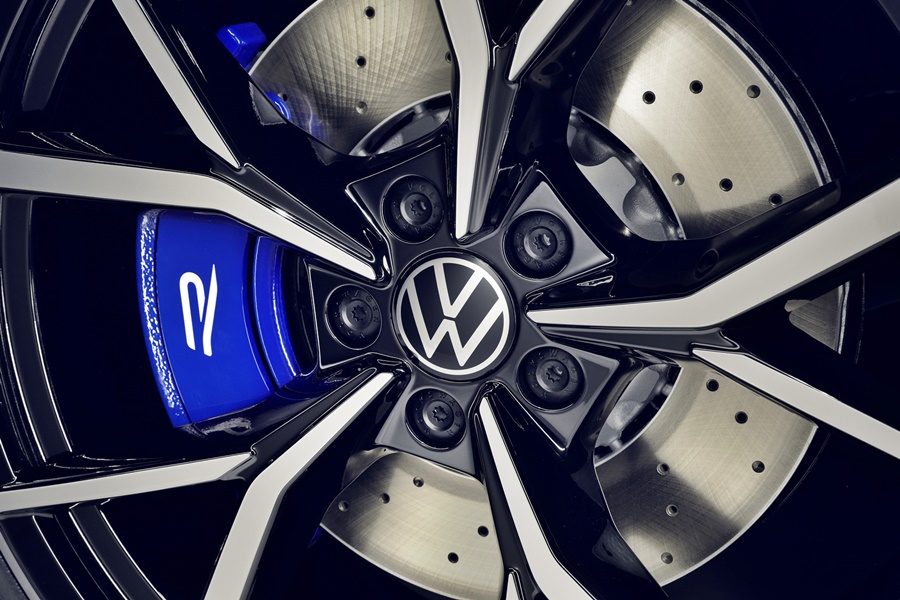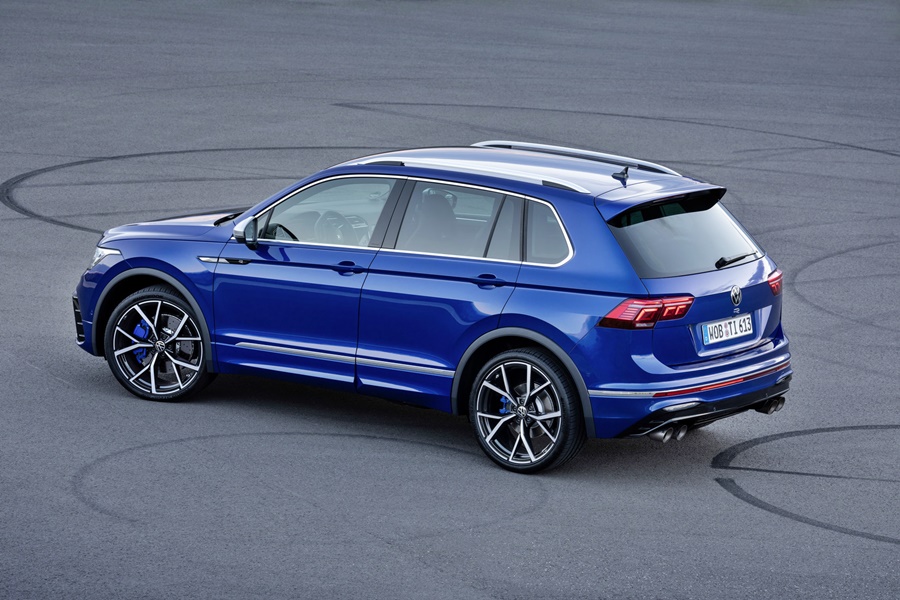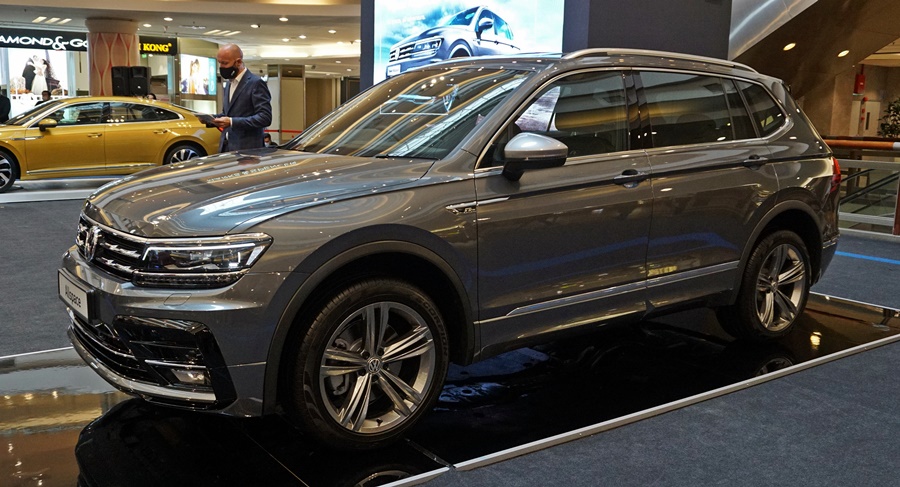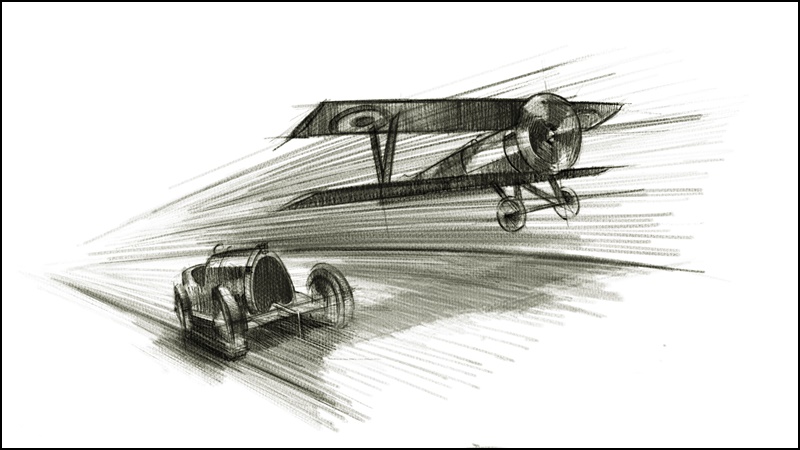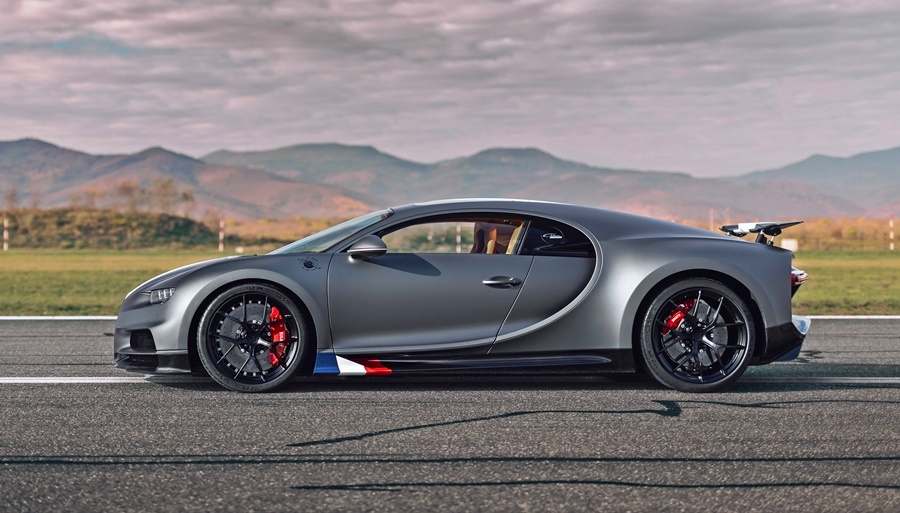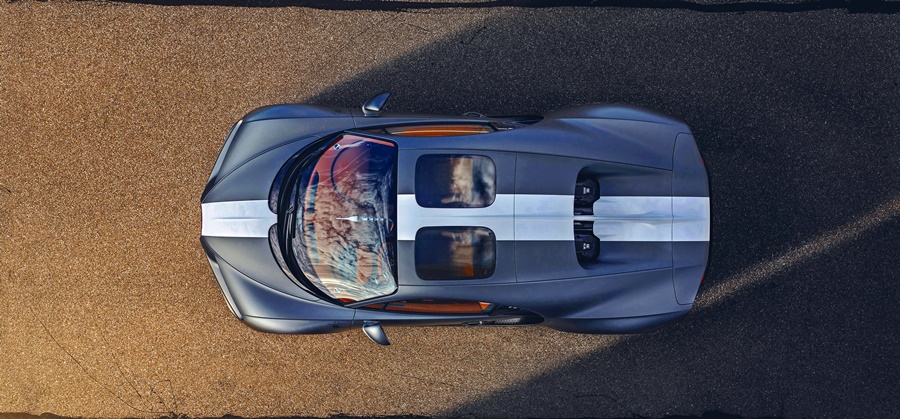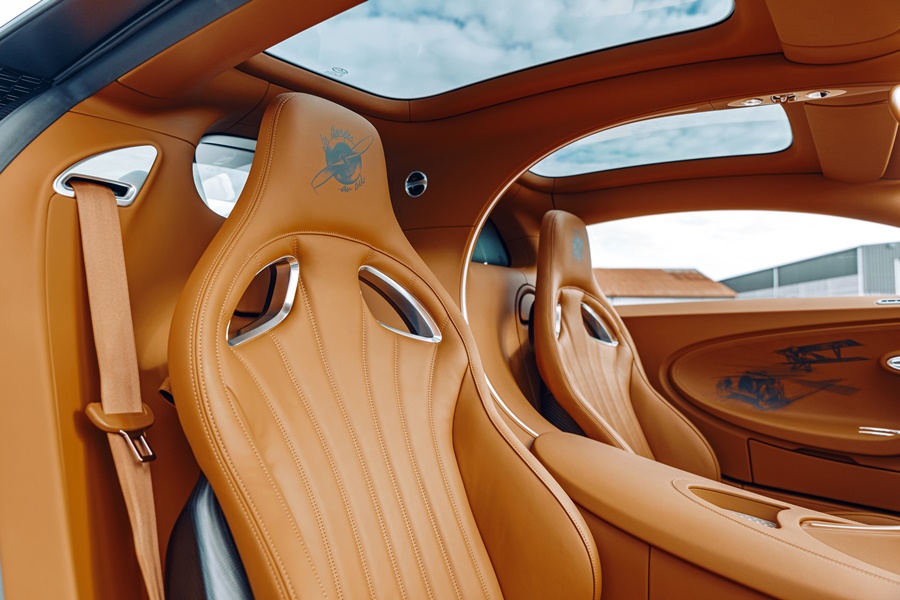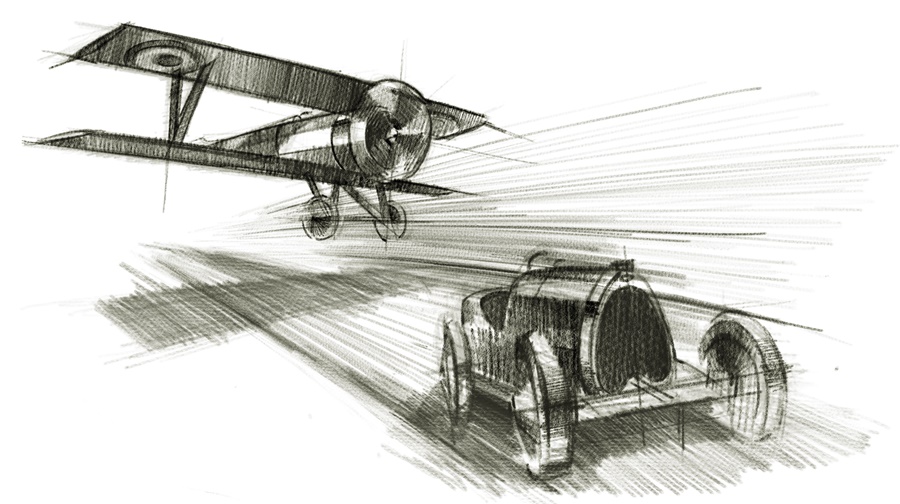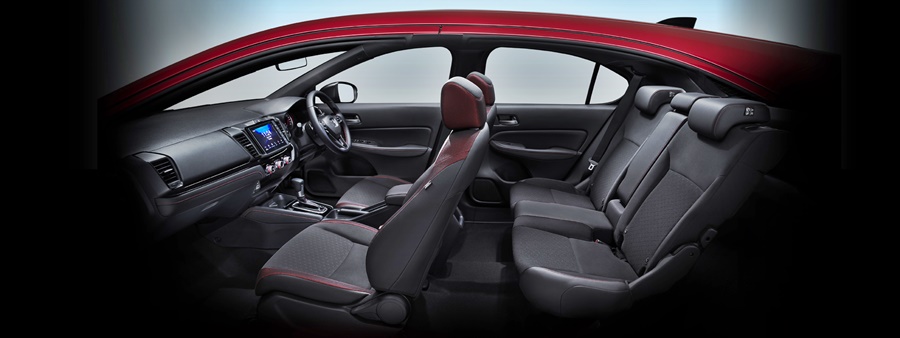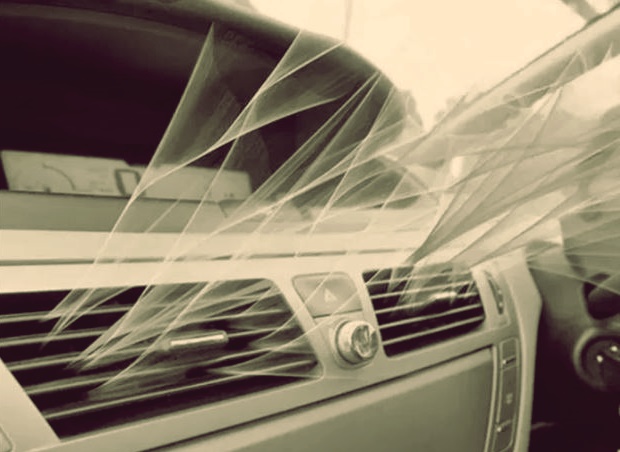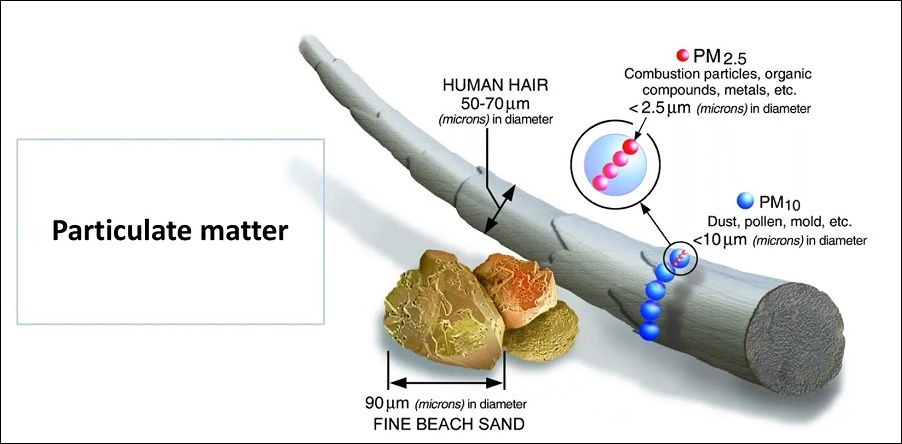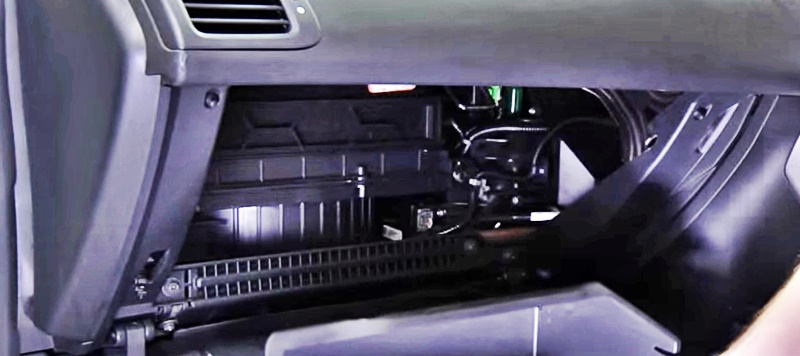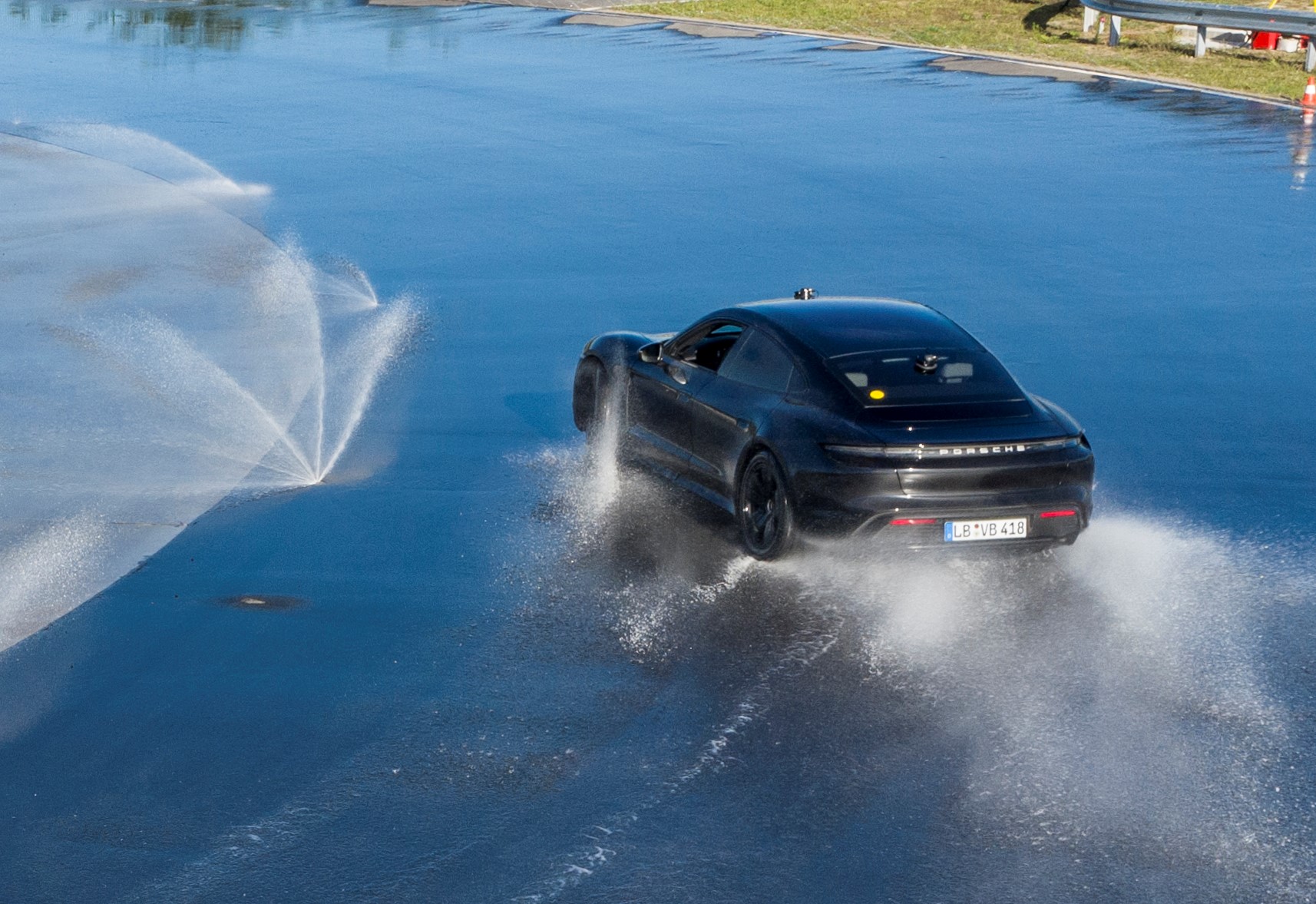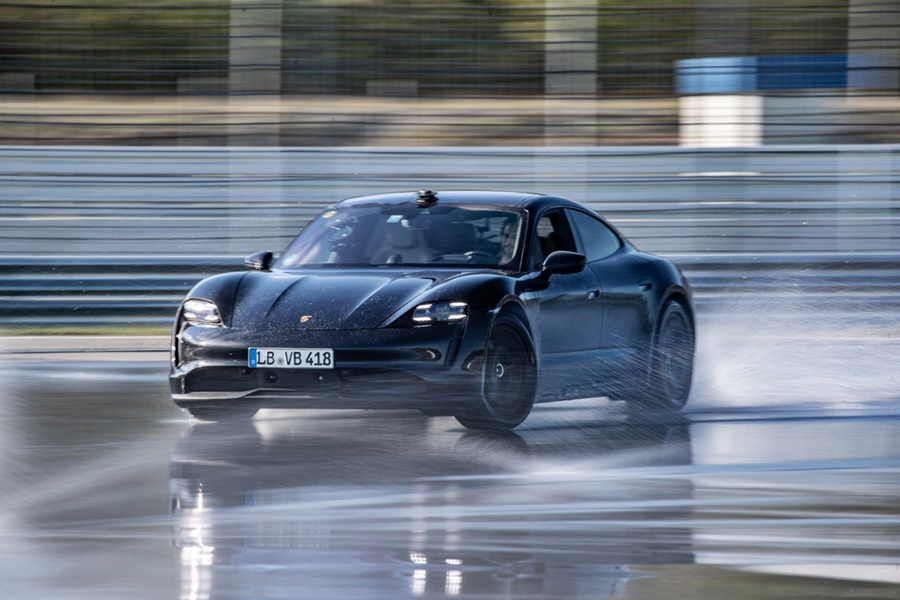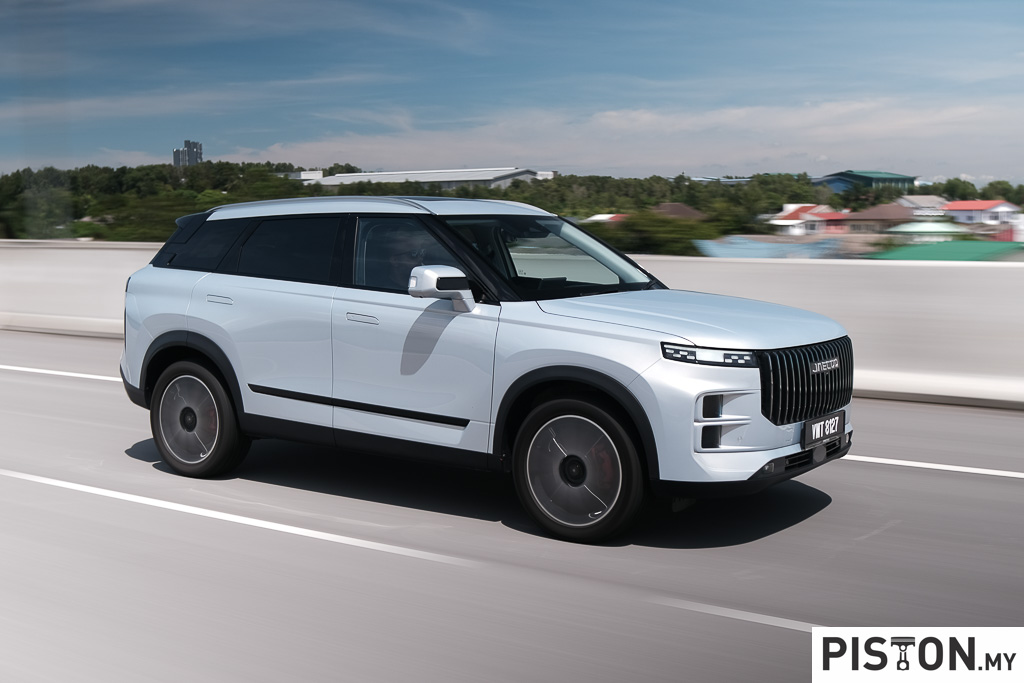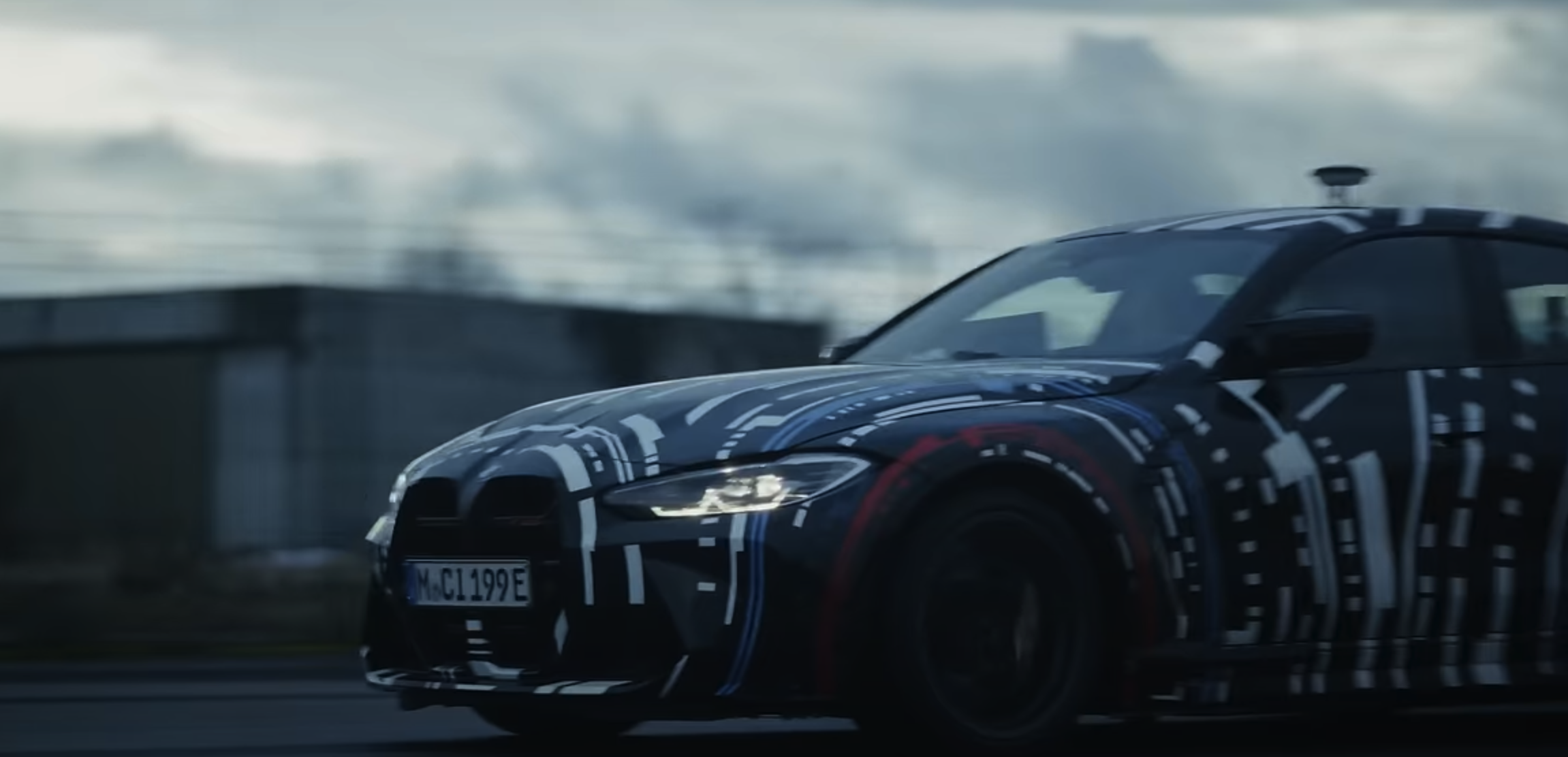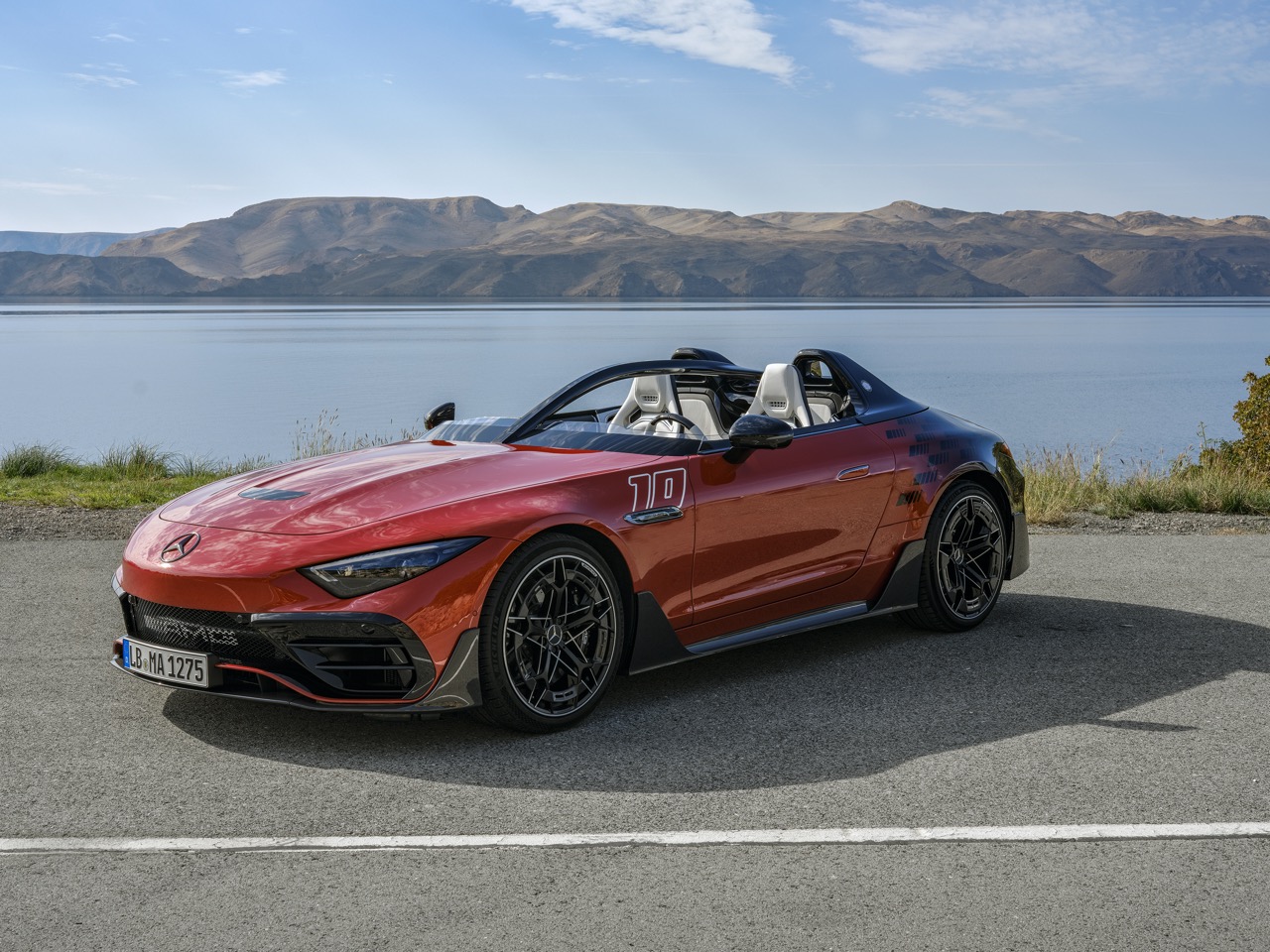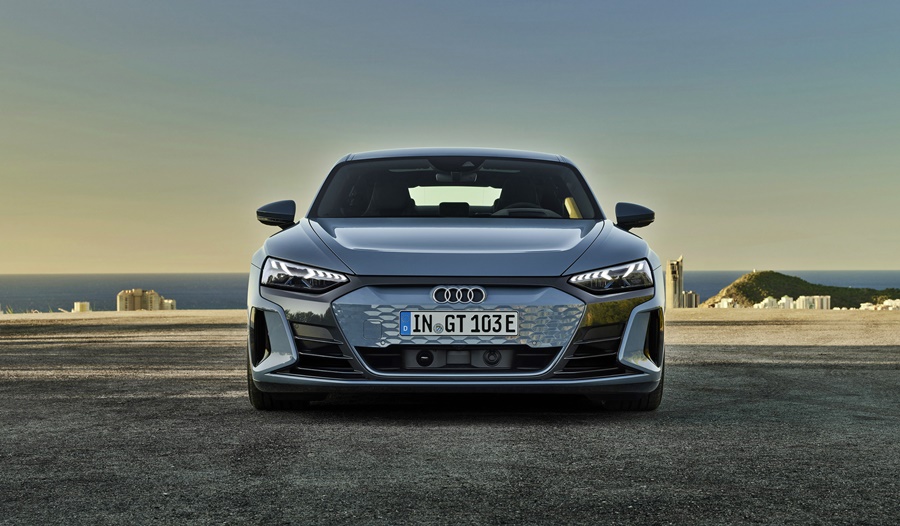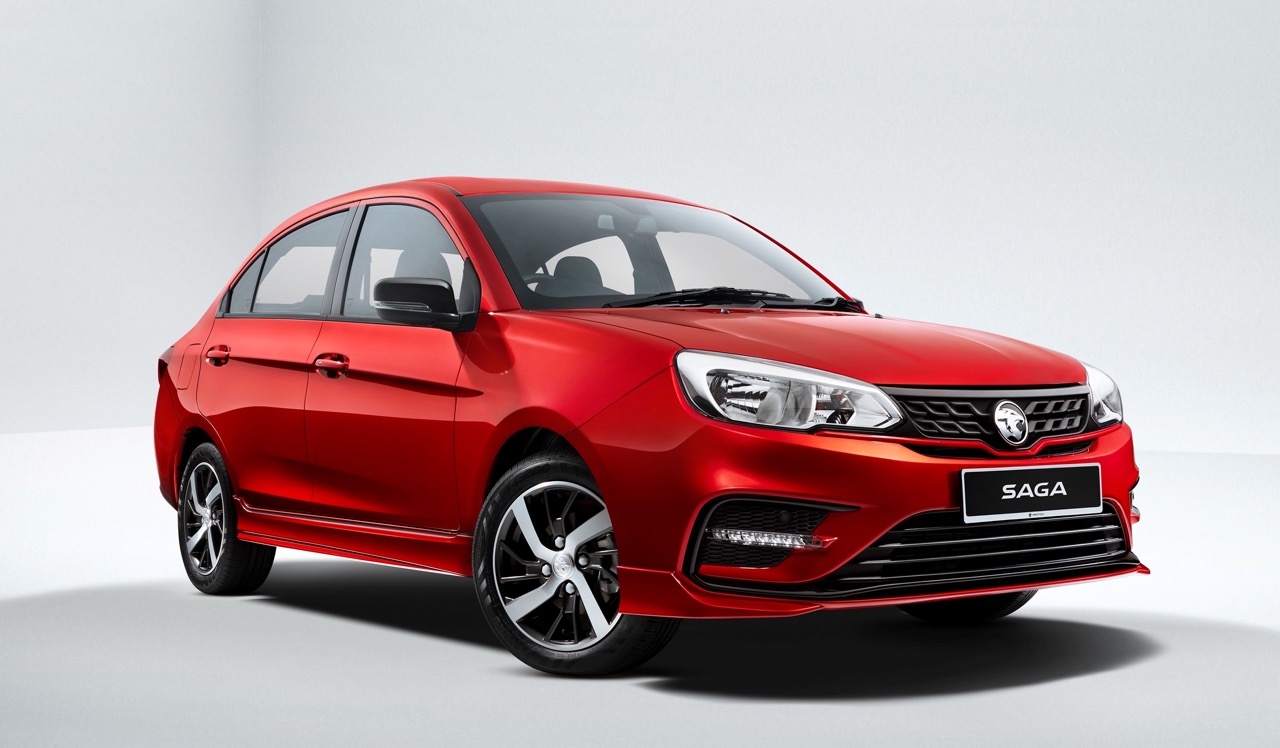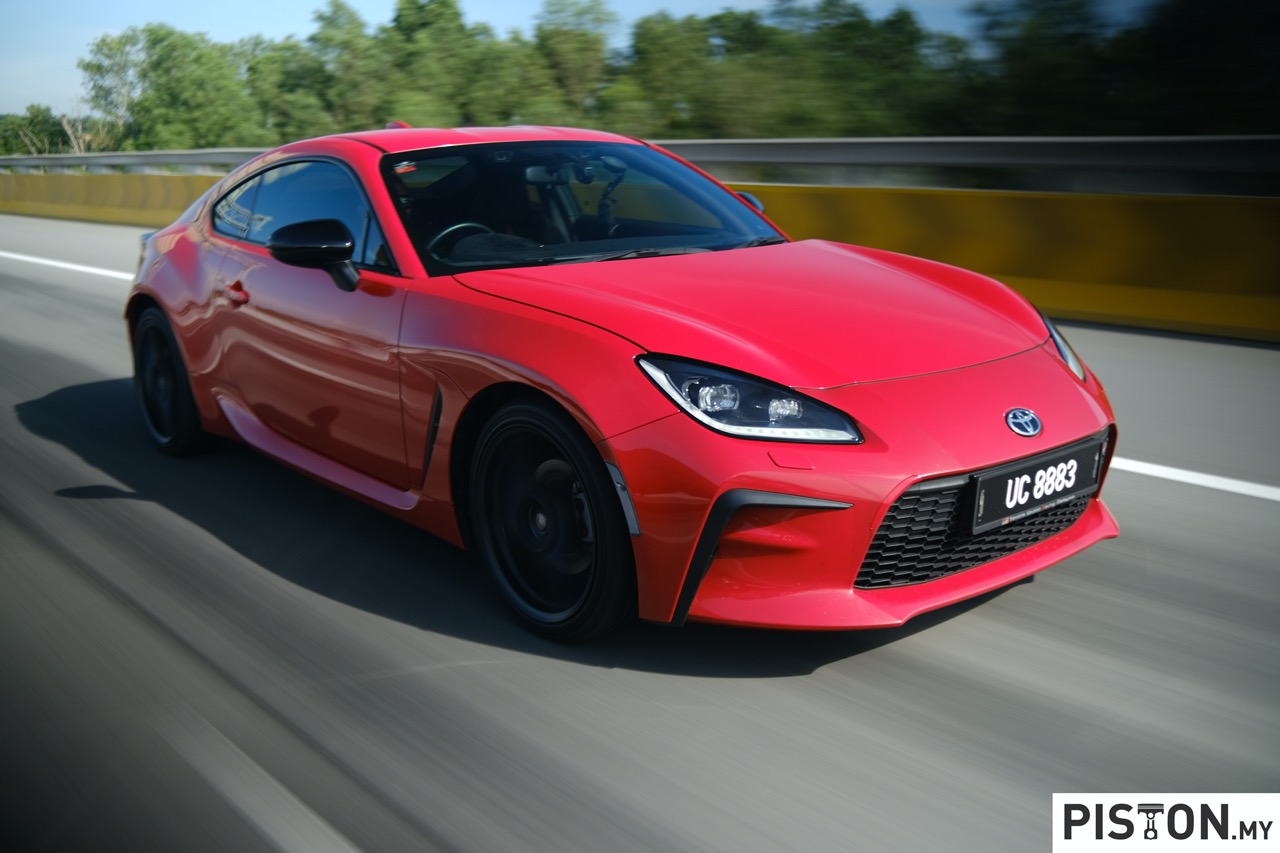Automobili Lamborghini and Ducati, both corporate citizens of the city of Bologna in Italy, have teamed up to create the Ducati Diavel 1260 Lamborghini motorcycle. Only a limited number of 630 units will be available, priced at not less than US$31,995 (around RM130,000).
Inspired by Lamborghini’s first hybrid supercar
The motorcycle possesses the common values of both brands – Italian excellence, sportiness, attention to design and a meticulous devotion to detail – with inspiration coming from the Lamborghini Sian FKP 37.
Based on the Diavel 1260 S, the concept of the Diavel Lamborghini transfers the core concepts of the Sian FKP 37 to the motorcycle world, redesigning the components that most characterize the Ducati model.
The new, lightweight forged wheels explicitly recall those of the car, as do the air intakes and radiator covers made of carbonfibre that suggest superimposed floating elements on the main structure of the bike. Finally, the typical Ducati red is referenced by the colouring of the Brembo brake calipers.
Each detail of the bike, redesigned by the Centro Stile Ducati for this specific project, is made of a light and precious material such as carbonfibre, also inspired by the car. In addition to the radiator covers and air intakes, the silencer cover, spoiler, central tank cover, seat cover, front and rear mudguards, dashboard cover and headlight frame are also made of the lightweight material.
Shared values in design and execution
“The Ducati Diavel inspired by the Lamborghini Sian celebrates our shared values: we are both Italian, we are inherently sporty, and our design always distinguishes our creations,” said Andrea Ferraresi, Director of Ducati Centro Stile. “The Diavel 1260 Lamborghini has been created by using the same design language that distinguishes the Sian FKP 37.”
The livery of the Diavel 1260 Lamborghini was conceived by the collaboration between the Centro Stile Ducati and Centro Stile Lamborghini. The paints applied to the bike are the same as those used for the Sian FKP 37, with the bodywork characterized by the Verde (Green) Gea colour, while the frame, undertray and forged rims are embellished with the Oro (Gold) Electrum colour.
The important Lamborghini design elements of the hexagon and ‘Y’ motif are evident. This special version of the Diavel pays homage to the former in the shape of the exhaust and the latter in the seat’s aesthetic details.
As for the number ‘63’, this is a special number for Lamborghini as it was founded in 1963, and the number that multiplied by ten arrives at the 630 numbered units to be produced by Ducati.





